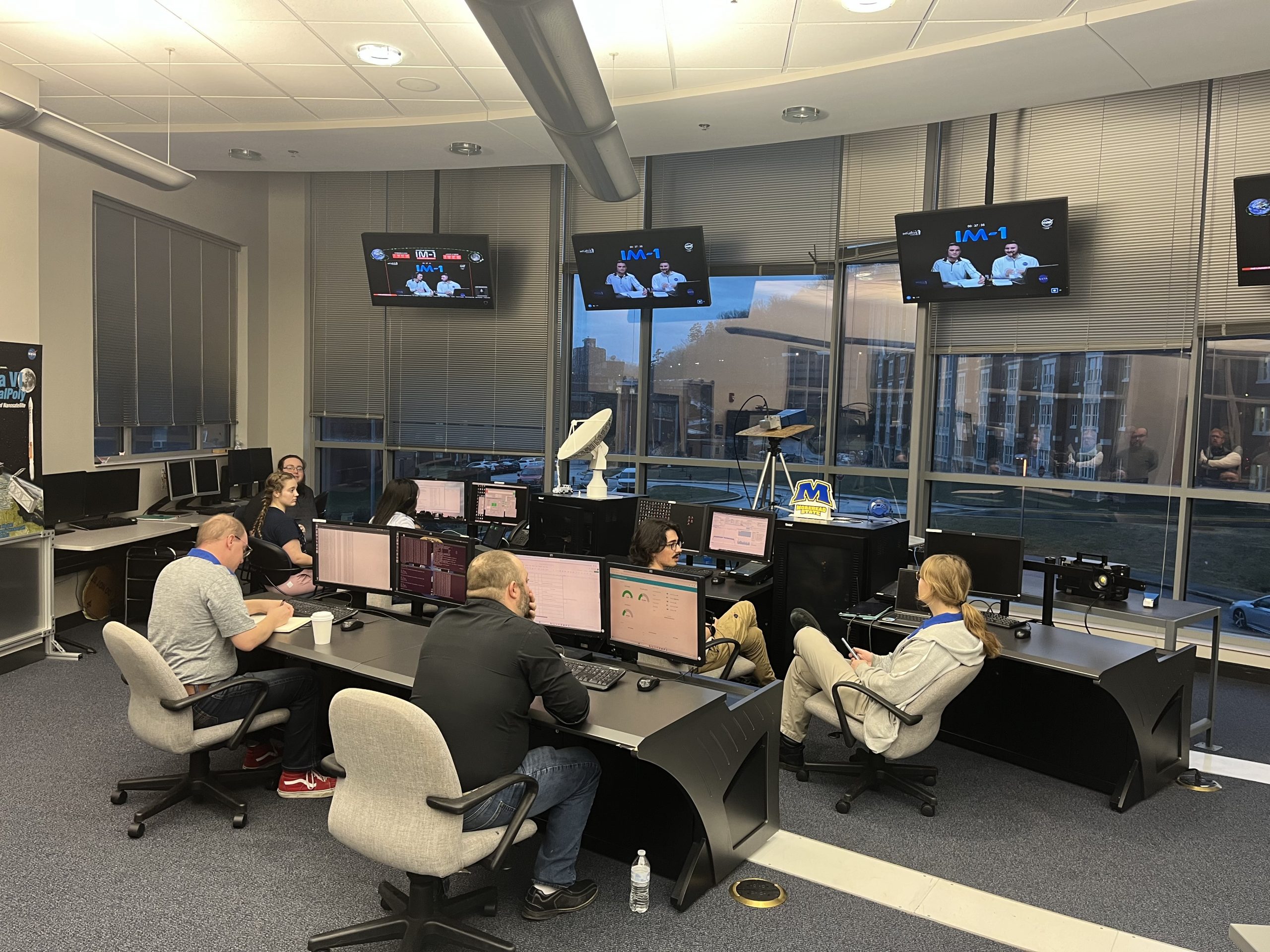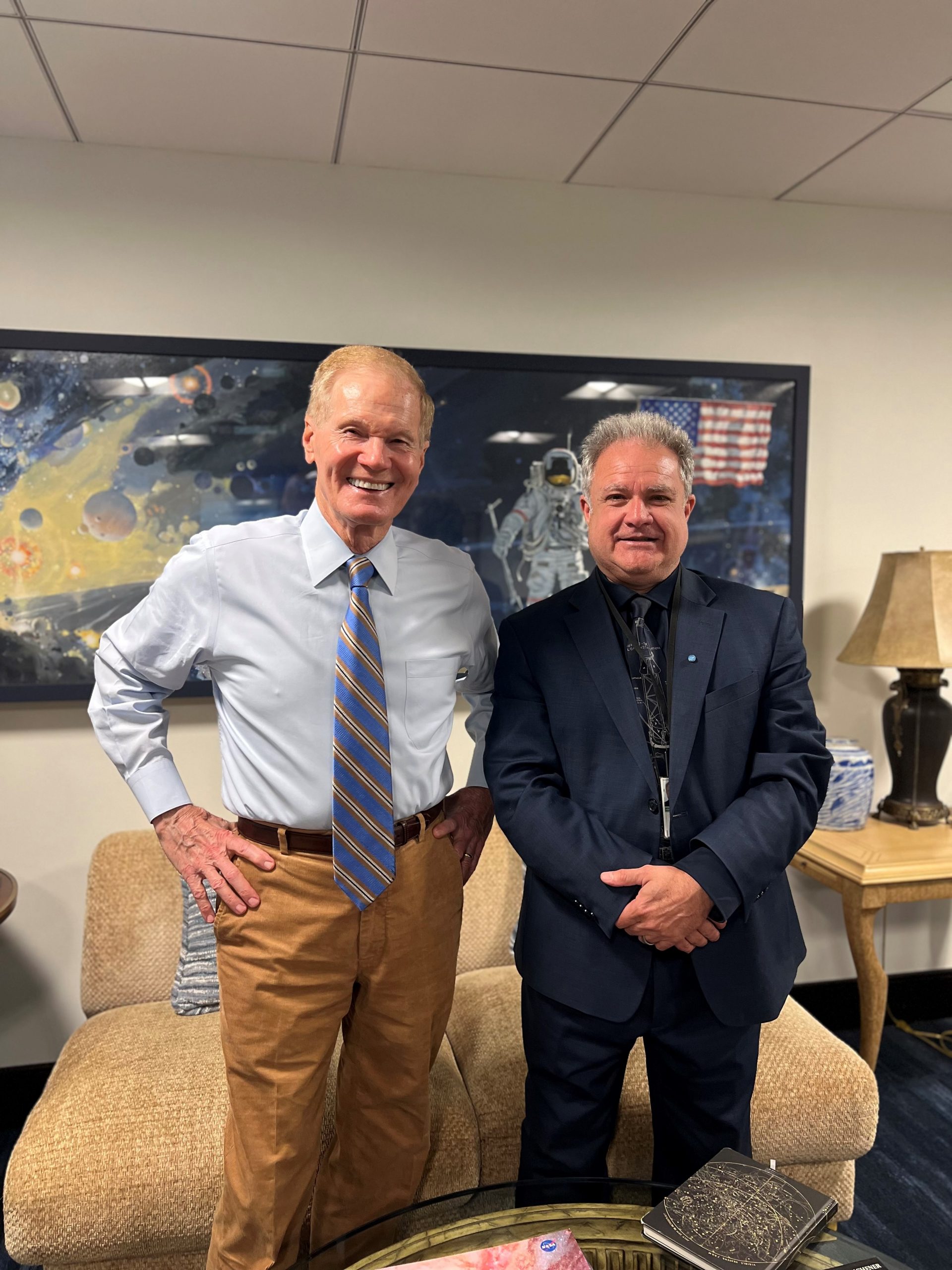
MOREHEAD, Ky. — Morehead State University’s Space Science Center staff and students provided unique and key support to the Intuitive Machines IM-1 lunar mission in February.
The mission launched Feb. 15 at 1:05 a.m., carrying IM’s lander, Odysseus (nicknamed Odie), to the Moon’s south polar region. Using its 21-meter dish ground station (NASA Deep Space Station -17) during lunar transit and while Odie was on the lunar surface, MSU provided command uplink and telemetry downlink as well as ranging and Doppler radiometric measurement as an integral part of Intuitive Machines’ commercial Lunar Data Network (LDN).
Odie experienced a challenge during the landing; its landing gear absorbed the initial impact. However, its final landing attitude had a 20-degree tilt, making it more difficult than planned to communicate with Odie. With MSU’s help resolving considerable engineering challenges, the team accomplished all the primary mission goals.
MSU’s unique status as both one of Intuitive Machines’ LDN stations and one of NASA’s Deep Space Network (DSN) sites proved invaluable in creating contingency commanding of Odie through the DSN — significantly higher power was required to close the command uplink due to IM-1’s orientation on the surface. To accomplish this, NASA devised a unique solution to have MSU serve as a mission operation “command bridge” between Intuitive Machines’ Nova Control and the DSN.
This strategy allowed MSU to simultaneously participate in Intuitive Machines’ mission voice loops, receive command direction from Intuitive Machines flight controllers, and then manually build, format and transmit those commands via MSU’s Space Link Extension tunnel to the DSN to be radiated. Similarly, the MSU Mission Operations Control (MOC) team participated in real-time voice coordination loops, including DSN, MSU and Intuitive Machines, and was integral in orchestrating the coordination between the various DSN stations and Intuitive Machines’ Nova Control.
The unique solution suggested by NASA worked. Intuitive Machines was able to issue hundreds of commands to Odie over the MSU MOC bridge to the DSN, up to the spacecraft on the Moon, and then retrieve the data with large radio telescopes on the ground, like the Parkes 64-meter antenna in Australia.
“MSU’s experience as both DSS-17 and as one of Intuitive Machines’ LDN stations allowed them to provide a critical bridge, enabling DSN contingency commanding to IM-1 in real-time during a rapidly evolving, time-constrained mission. Commanding to IM-1 by the DSN would not have been possible without the assistance and professionalism of the MSU MOC team,” said Jason Soloff, chief engineer of the Intuitive Machines Lunar Data Network.

“The Intuitive Machines team, NASA, and the Morehead State team came together to utilize our infrastructure to provide an innovative solution, turning a first-of-its-kind idea on how to command Odie into a reality,” said Dr. Ben Malphrus, executive director of the Space Science Center.
“The support that we have received from so many — NASA, from the state of Kentucky, from our federal congressional representatives, and from our partners at Intuitive Machines – has been extraordinary and has provided a return on the investments of time, expertise, and resources. Congressman Hal Rogers and Senator Mitch McConnell, in particular, identified federal funding to establish the ground station and Center in the early 2000s. Those investments are showing significant returns even now.”
The IM-1 mission provided an opportunity for MSU staff and students to participate in a historical lunar mission, and there is more to come with the launch of IM-2 and NASA’s lunar exploration initiatives soon.
Intuitive Machines, a Houston-based Space Co., made history on Feb. 22 when it became the first non-government U.S. organization to land a spacecraft on the Moon. The mission, IM-1, and its lander Odysseuswas a success despite numerous engineering challenges. NASA and the company declared the mission a success as the mission wound down as Odie’s location on the Moon experienced nightfall.
Bottom Photo: NASA Administrator Bill Nelson and Dr. Ben Malphrus, executive director of MSU’s Space Science Center. Photo Credit: Faith McKie, NASA HQ.



















